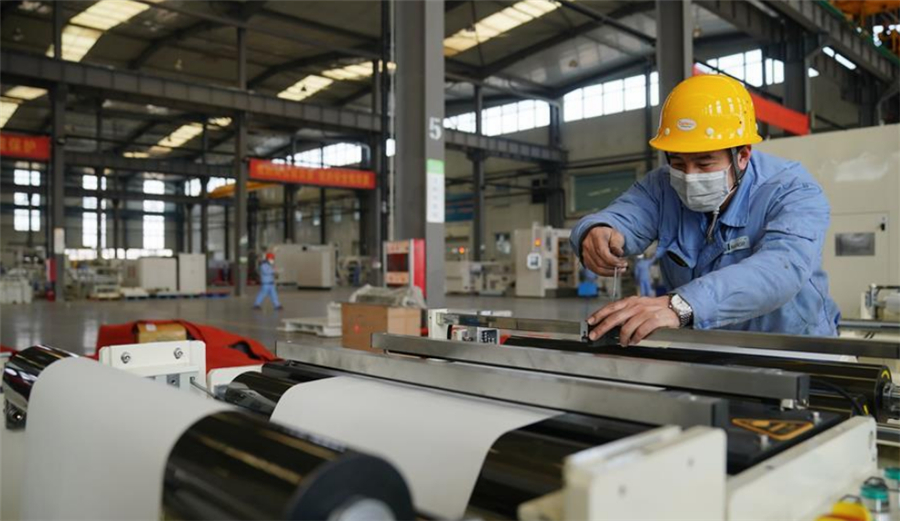98.6% of major industrial companies in China resume operations

A worker assembles a machine in a workshop in Xingtai, north China's Hebei Province, February 19, 2020. /Xinhua
As of March 28, 98.6 percent of China's major industrial enterprises have resumed production, representing an increase of 15.5 percentage points from February 23, said an official with the country's industry and information ministry on Monday.
Enterprises in China's major industrial provinces, Guangdong, Jiangsu, Zhejiang, Shandong, Fujian, are basically fully back on stream, said Xin Guobin, vice minister of industry and information technology.
In Hubei, the epicenter of the outbreak in China, 95 percent of the major industrial enterprises have resumed operation, and 70 percent of the employees have returned to work, said Xin.
Driven by some leading enterprises, a large number of small and micro-enterprises (SMEs) have accelerated the resumption of work and production with an operation rate of 76 percent, he added.
The reinstatement rate of employees has also improved. Over 90 percent of employees have returned to work in the steel and electronics industries, and 70 to 90 percent of those in the textile, automotive, machinery and light industries have resumed work.

A man waits for the train at a subway station in Wuhan, central China's Hubei Province, March 29, 2020. Wuhan resumed its subway service on March 29. /Xinhua
Financial measures carried out smoothly
The country continues to support enterprises affected by the outbreak. Xin said China's 300-billion-yuan special relending program for enterprises amid the outbreak has provided over 200 billion yuan for over 5,000 enterprises.
Meanwhile, more than 200 billion yuan with a loan interest rate lower than 4.55 percent have been issued among the 500 billion yuan relending and rediscount quotas to help smaller banks increase support to SMEs.
China announced in February that it would waive the corporate social insurance worth 500 billion yuan. The country has also dedicated a 103 billion yuan fund in March to support people living in poverty.

A shopper has her temperature checked before entering a shopping mall in Harbin, capital of northeast China's Heilongjiang Province, March 29, 2020. /Xinhua
Auto industry regains productivity
Xin also said the overall productivity of the automotive industry has reached the same level as last year.
The operating rate of automotive enterprises has rebounded from 60 percent on February 19 to 97 percent. Also, 82 percent of employees have returned to work, increasing from 50 percent on February 19.
He, however, cautioned that the auto industry is still facing great difficulties caused by sluggish demand. "Even if the current resumption rate of enterprises is relatively high, due to insufficient market demand, companies' inventory may increase. Later on, some enterprises may further reduce their productivity," Xin said.
He added that the ministry is actively cooperating with the relevant departments in coming up with policies to stabilize and expand automobile consumption.
27,000 ventilators supplied nationwide
Ventilators have seen a substantial rise in demand as the epidemic spread globally. Of the 853 ventilator components suppliers in the country, 794 have resumed production in a timely manner, said Xu Kemin, a deputy director in the medium and small enterprises department of the ministry.
As of March 29, major ventilator companies have supplied more than 27,000 ventilators nationwide, of which more than 3,000 were invasive ventilators, Xu said.
The demand for invasive ventilators abroad has increased dramatically. Xu said, at present, eight of the 21 invasive ventilator manufacturers in China have obtained the EU mandatory CE certification.
He added that the eight manufactures have a weekly production capacity of about 2,200 units and make up for about one-fifth of global production.
About 20,000 units have already been ordered, and many more orders are in negotiations.
China provided more than 1,700 invasive ventilators in the 10 days leading up to May 29, about half of the total domestic supply since the start of the year, while catering to domestic demand, Xu said.
Editor: John Li